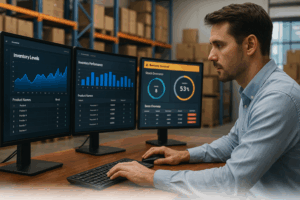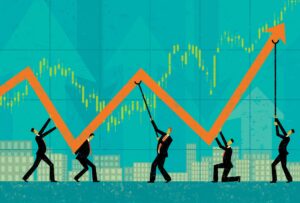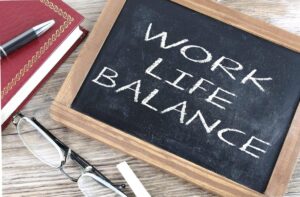Introduction
Supply chains have long been seen as the arteries of commerce—delivering goods and services efficiently from origin to consumption. But today, they are undergoing a profound metamorphosis. No longer relegated to the back-office or treated as mere cost centers, supply chains have become central to business resilience, innovation, and value creation. The disruptions of the past five years—from COVID-19 and the Russia–Ukraine conflict to climate-driven port closures and semiconductor shortages—have crystallized the need for more agile, intelligent, and adaptive supply chain models.
According to the 2023 Supply Chain Resilience Report by the Business Continuity Institute, 84% of organizations globally reported cost increases as a direct result of supply chain disruption. The conclusion is clear: maintaining the status quo is not an option. Businesses must shift from reactive firefighting to proactive innovation—embedding creative problem-solving into the very DNA of their supply chain operations.
Rethinking the Role of Supply Chains
In the past, supply chain excellence was synonymous with lean inventory management, low-cost sourcing, and operational efficiency. But modern supply chains must also be responsive, visible, and sustainable. As the global environment grows more volatile, businesses are reengineering supply networks to pivot faster and mitigate risks more intelligently.
Consider Zara, the fashion brand renowned for its vertically integrated supply chain. By producing much of its merchandise in proximity to its headquarters in Spain and operating on a biweekly product refresh cycle, Zara stays tightly aligned with customer preferences. Its demand-driven model allows it to adapt quickly to fashion trends, unlike traditional retailers bound by long seasonal design cycles.
Meanwhile, Walmart has invested heavily in predictive analytics and machine learning to forecast demand across its vast retail network. By incorporating IoT sensors and data from weather patterns, promotions, and local events, Walmart dynamically adjusts inventory distribution—minimizing overstock and improving customer satisfaction.
Another example is Procter & Gamble (P&G), which uses blockchain technology to enhance traceability across its supply chain. By improving visibility from raw materials to finished goods, P&G strengthens consumer trust, ensures quality, and responds more swiftly to recalls or disruptions.
The Cultural Foundations of Innovation
Technological advancement alone doesn’t drive transformation—culture does. For innovation to take root, organizations must cultivate environments that reward creativity, promote psychological safety, and empower every employee to contribute ideas.
A striking example comes from Toyota, which has long championed its “kaizen” philosophy—encouraging continuous improvement at all levels. On the factory floor, workers are empowered to halt production lines if they spot a defect and are encouraged to propose operational enhancements during daily team meetings. This decentralized innovation model has made Toyota one of the most admired supply chains in the world.
At Unilever, cross-functional “agile pods” have brought together professionals from supply chain, R&D, and sustainability to co-develop new product packaging. These teams developed a recyclable toothpaste tube prototype within just six months—demonstrating how integrated collaboration accelerates breakthrough solutions.
In a similar spirit, UPS established a Center for Innovation in Georgia, where teams pilot new technologies like autonomous delivery vehicles, drone-supported deliveries, and AI-powered route planning. These initiatives would not have materialized without a corporate culture that embraces risk-taking and rewards experimentation.
Risk-Taking, Learning, and the Space to Experiment
The most resilient supply chains don’t just adapt—they anticipate. But prediction requires experimentation, and experimentation requires tolerance for failure.
Consider Amazon, which operates dozens of innovation labs where new warehouse automation tools are tested in real-world conditions. Technologies like Kiva robots, real-time tracking dashboards, and robotic palletizers are first prototyped and iterated rapidly before scaled deployment.
The COVID-19 pandemic put these principles into action on a global stage. Companies like Pfizer and Moderna, in collaboration with DHL and FedEx, built ultracold supply chains virtually overnight to distribute mRNA vaccines. Through rapid prototyping, real-time GPS tracking, and modular cold storage units, they managed complex international logistics with astonishing speed and reliability—highlighting what’s possible when organizations are empowered to improvise.
Learning organizations also focus heavily on workforce development. For example, Siemens runs a global “Learning Campus” initiative to reskill employees in data analytics, logistics automation, and supply chain risk management. Similarly, Target Corporation launched internal supply chain academies where frontline workers learn Six Sigma and process mapping—helping them contribute to continuous improvement in distribution centers.
Recognition, Incentives, and External Influence
Fostering innovation also means recognizing and amplifying employee contributions. 3M’s “15% rule”, which encourages employees to devote a portion of their work time to passion projects, has led to some of the company’s most successful product innovations—including Post-it Notes. By providing structured space for curiosity, 3M cultivates a culture where innovation thrives.
At GE Appliances, the “Blue Ocean Ideas” platform allows employees to submit ideas and vote on others’ suggestions. Winning proposals receive funding and mentorship to bring concepts to market. This crowdsourced model makes innovation inclusive and visible across the organization.
Equally powerful are external collaborations. Companies are increasingly adopting “open innovation” models, working with startups, academia, and even competitors to solve shared challenges. Maersk, for example, has partnered with IBM on TradeLens, a blockchain-based platform that digitizes shipping documentation—improving transparency and reducing fraud. Nestlé collaborates with biotech firms to develop plant-based packaging and reduce plastic waste.
These alliances enable organizations to leapfrog internal development cycles and tap into broader ecosystems of innovation.
The Tangible Payoff of Supply Chain Innovation
The return on innovation is not theoretical—it’s measurable. According to a 2023 Gartner report, organizations that have adopted AI and machine learning in their logistics networks have:
-
Reduced operating costs by up to 15%
-
Improved on-time delivery by 60%
-
Lowered inventory holding costs by 20%
-
Reduced forecast error rates by 30%
For example, UPS’s ORION (On-Road Integrated Optimization and Navigation) system uses AI to optimize delivery routes. Since its implementation, UPS has cut more than 100 million miles from its annual routes, saving millions of gallons of fuel and reducing carbon emissions by over 100,000 metric tons.
PepsiCo’s supply chain digitization program, meanwhile, has allowed real-time production adjustments based on sales data from retailers. This agility has reduced product waste and enabled faster market response, leading to increased shelf availability and customer satisfaction.
And beyond cost and performance, innovative supply chains contribute to brand equity and talent attraction. In a LinkedIn survey of supply chain professionals, over 70% said they were more likely to join a company known for innovation and sustainability.
Conclusion
The future of supply chain management will not be written by the most efficient operators—but by the boldest innovators. As complexity increases and volatility becomes the norm, supply chains must evolve into adaptive, intelligence-driven ecosystems capable of rapid learning and reinvention.
Achieving this requires a cultural and operational shift: empowering employees to think differently, investing in tools that enhance agility, forging cross-functional and external collaborations, and embracing the inevitability of failure as a stepping stone to success.
In the words of author Peter Drucker: “The best way to predict the future is to create it.” For supply chain leaders, that future will be defined not just by technology, but by a mindset of unrelenting innovation.
Author: Ed Danielov
Publication Date: May 29, 2025
© Copyright 2025 Perfect Planner LLC. All rights reserved.
References
Business Continuity Institute. (2023). Supply Chain Resilience Report 2023. https://www.thebci.org
Gartner. (2023). Supply Chain Technology Adoption Trends. https://www.gartner.com
Harvard Business Review. (2021). How Toyota’s Culture Enabled It to Weather the Chip Shortage. https://hbr.org
Microsoft. (2023). AI’s Impact on the Modern Supply Chain. https://www.microsoft.com
Best Practice AI. (2022). ORION and UPS: Fueling Savings with Machine Learning. https://www.bestpractice.ai
Supply Chain Dive. (2021). Pfizer and the Race to Distribute the COVID-19 Vaccine. https://www.supplychaindive.com
HYPE Innovation. (2022). How Leading Brands Build Open Innovation Ecosystems. https://www.hypeinnovation.com
MHI & Deloitte. (2024). Annual Industry Report: The Collaborative Supply Chain. https://www.mhi.org
Nestlé. (2023). Sustainability and Packaging Innovation. https://www.nestle.com






